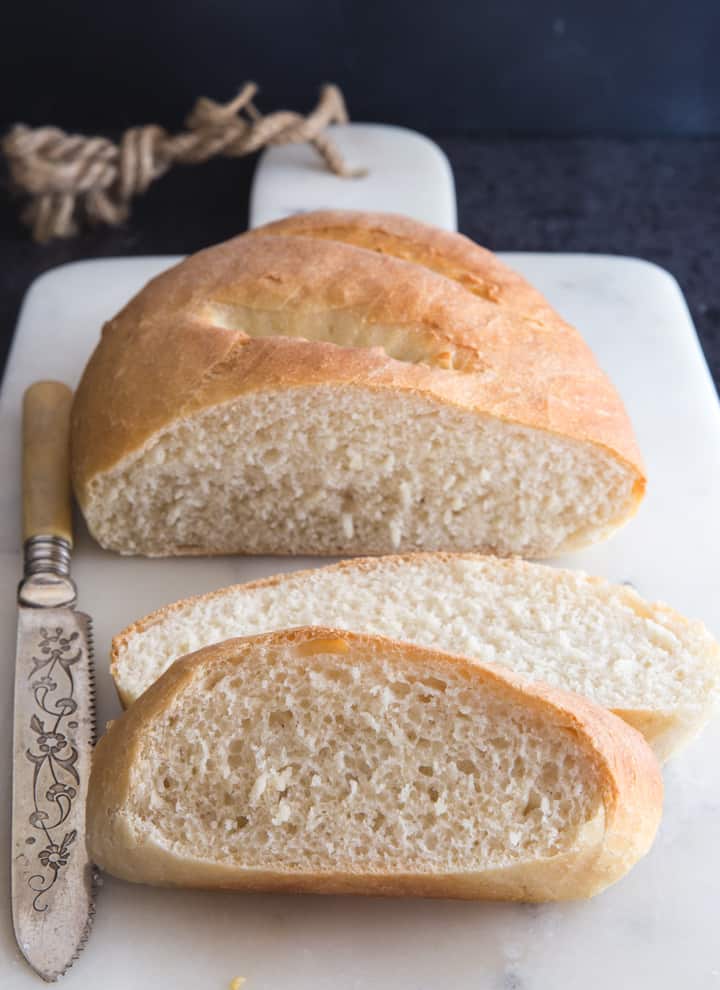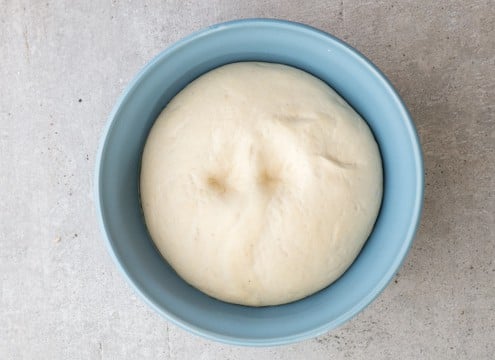Baking the Best Bread doesn’t have to be hard or unattainable. Just follow some simple rules and you can have the aroma and taste of fresh oven baked bread in your house too.
What is the best speed for kneading bread
If you are using a stand up mixer the best speed is #2. And of course depending on the recipe you may need to knead anywhere from three minutes to 10 minutes. Sometimes with resting time in between.
Make sure the yeast is still active
The yeast you are using could be old or dead, to tell if the yeast is still active, in a small bowl add a 1/2 cup of water, sprinkle 1 1/2 teaspoons of yeast and a pinch of sugar over the top, stir it up, then let it stand for about 5 minutes.
If the yeast is still active, it will dissolve completely into the water and the liquid will start bubbling.
Make sure your water isn’t too hot or too cold. Too hot and you will kill the yeast, too cold and it will take a long time for the dough to rise. The perfect temperature is 100-110F.
How long should bread rise for
It all depends on how warm your kitchen is. A nice warm kitchen and your dough will probably rise in 45-60 minutes. A dough with less moisture will take longer to rise, and of course a cooler kitchen and your dough will need a longer rising time.
What is a starter dough?
It is a fermented dough that is filled with natural wild yeast and a bacteria that is called lactobacilli. A sour dough bread uses a starter dough to rise instead of active dry yeast like other breads.
What are the different types of bread?
How do you know when the bread is done?
There are three ways to tell when the bread is done, the first is by looking at the colour of the bread, which is usually a light to dark golden brown (depending on the bread), the second is by knocking on the bottom of the bread, if there is a hollow sound it usually means the bread is done and the third is by the internal temperature which should be 190F (88C) or 200F (93C) for Brioche type breads.
What is the best flour to use
I personally use all purpose but if you prefer bread flour works just as well, some people swear by it. It will give your dough a chewier and denser bread.
Why is the dough not rising?
There are a few reasons the dough is not rising, could be your yeast has expired or is old, your water was too hot so it killed the yeast. Your room is too cold for the dough to rise, or you aren’t giving the dough enough time to rise. If your bread doesn’t rise don’t throw it out, just make some flat bread, or even form into flat round circles and fry in oil, sprinkle with sugar and you have the best fritelle.
Why place a pan of water in the oven during baking?
Adding water to an oven creates a moistened environment, this allows the bread to rise easier by delaying the setting of the crust. It makes bread deliciously light and crusty. The best way is to put an oven safe pan in the oven while re-heating then add a cup of water to the pan, place the bread in the oven and bake.
How to score bread
I love the look of a beautifully scored fresh loaf of bread. I discovered an interesting video on the different ways to score bread, you might want to check out the Foodgeek if you need an idea.
Why do you let dough rise twice?
Allowing dough to rise twice results in a smaller crumb without large air holes in your bread. Punching the dough and letting the dough rise a second time helps prevent those holes.
Can dough rise for too long?
If you let the dough rise for too long, the taste and texture of the finished bread suffers. Because the dough is fermenting during both rises, if the process goes on for too long, the finished loaf of bread can have a sour, unpleasant taste. … Over-proofed loaves of bread have a gummy or crumbly texture.
How do you know when the dough has risen enough
With your knuckles or a couple of fingers make an indentation in the dough, If the indentation disappears, the dough needs more time to rise. If the indentation remains, it means its over-proofed. If the dough comes back out slowly and leaves a slight indentation – then it is ready and perfectly risen!
Can the dough be placed in the fridge to rise?
Yes, you can refrigerate the bread dough, and in fact you will probably find that it will give you better, tastier results, because the yeast has more time to do its work. … You should refrigerate the dough immediately after mixing, not after a rise.
Why is the dough covered while rising?
The dough is covered to keep dust off and to prevent the dough from drying on top, a crusty top is not good.
Why is it rolled in oil before rising?
The reason the dough is oiled is to prevent it from forming a dry crust on top of the dough. If a dry crust dose appear it can be kneaded back into the dough without altering the flavour of the bread but it’s just extra work that can be easily eliminated by lightly oiling the top of the dough.
The perfect pan size for the amount of dough
An 8 1/2 x 4 1/2 inch pan is perfect for a recipe with approximately 3 cups of flour.
A 9 x 5 inch pan is perfect for a recipe with approximately 4 cups of flour.
A 10 x 5 inch pan is perfect for a recipe with approximately 4 1/2 cups of flour.


